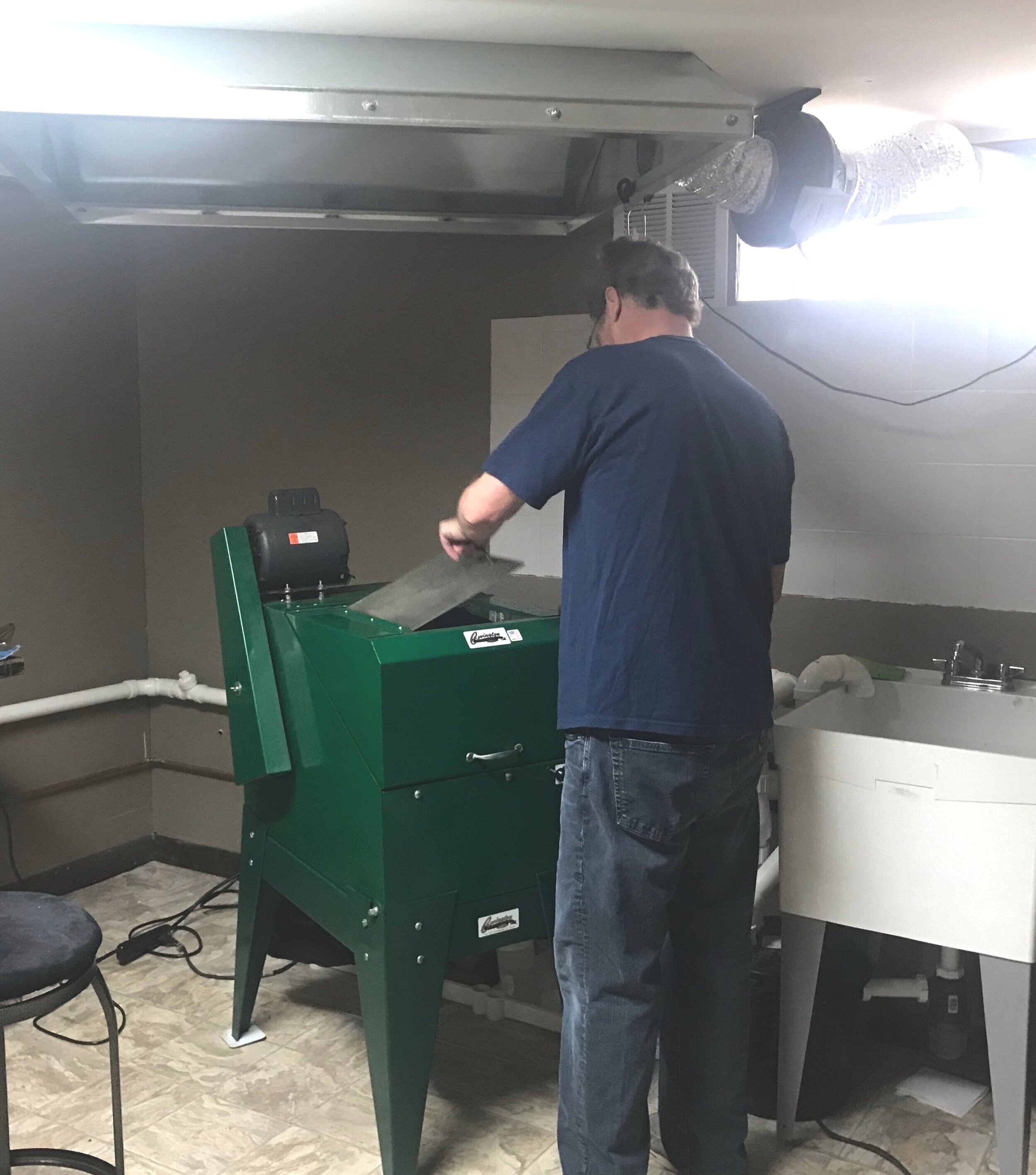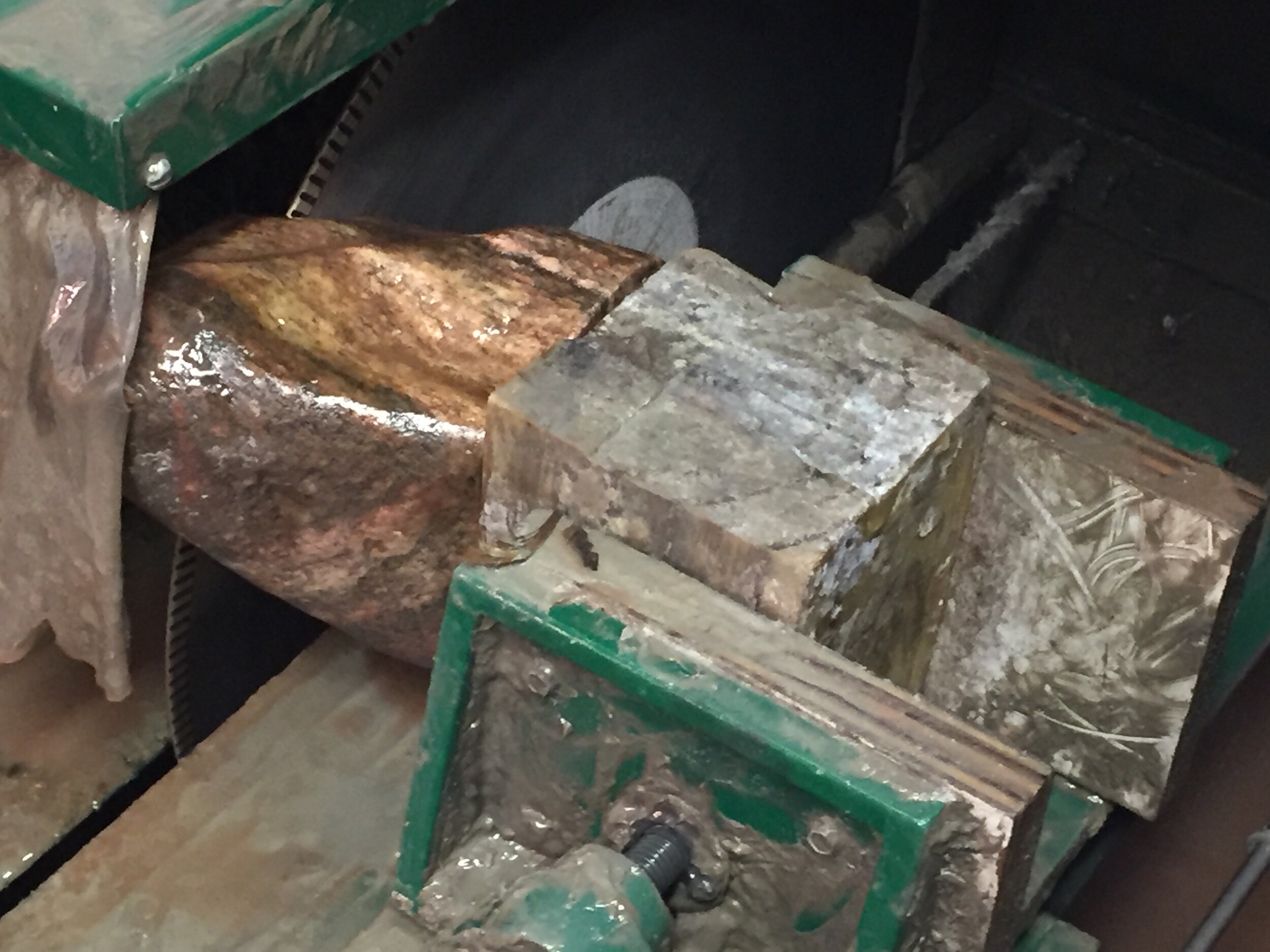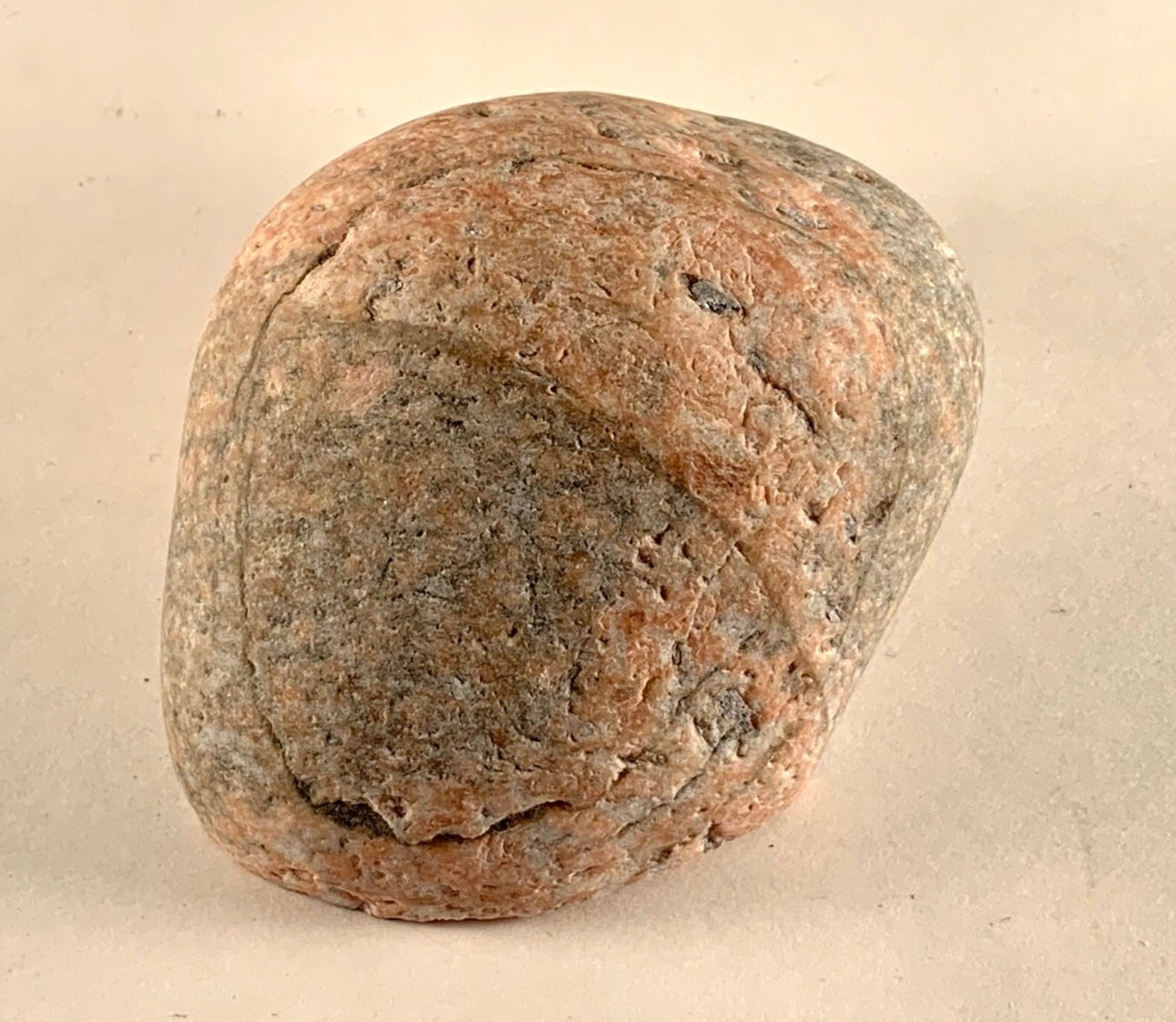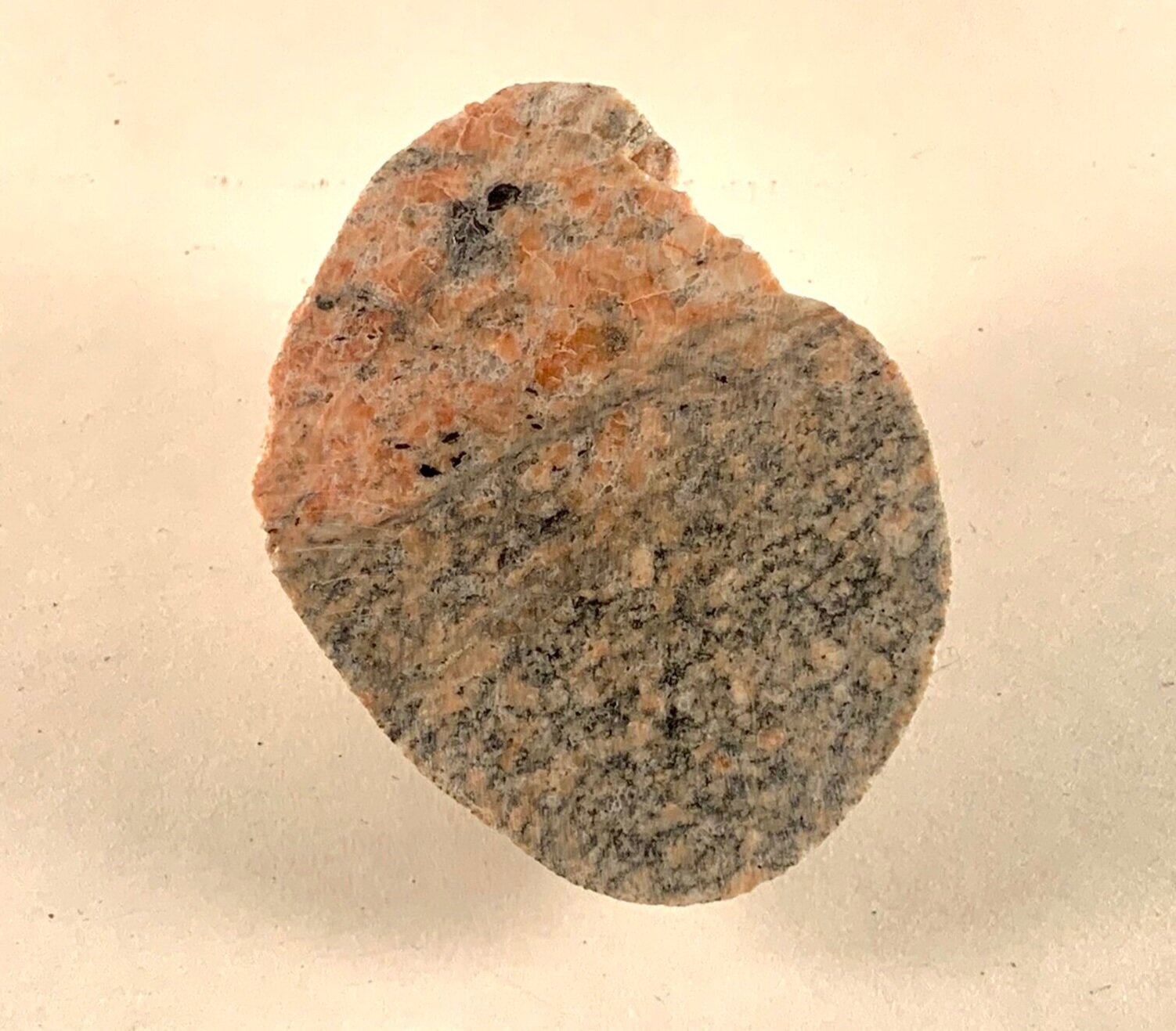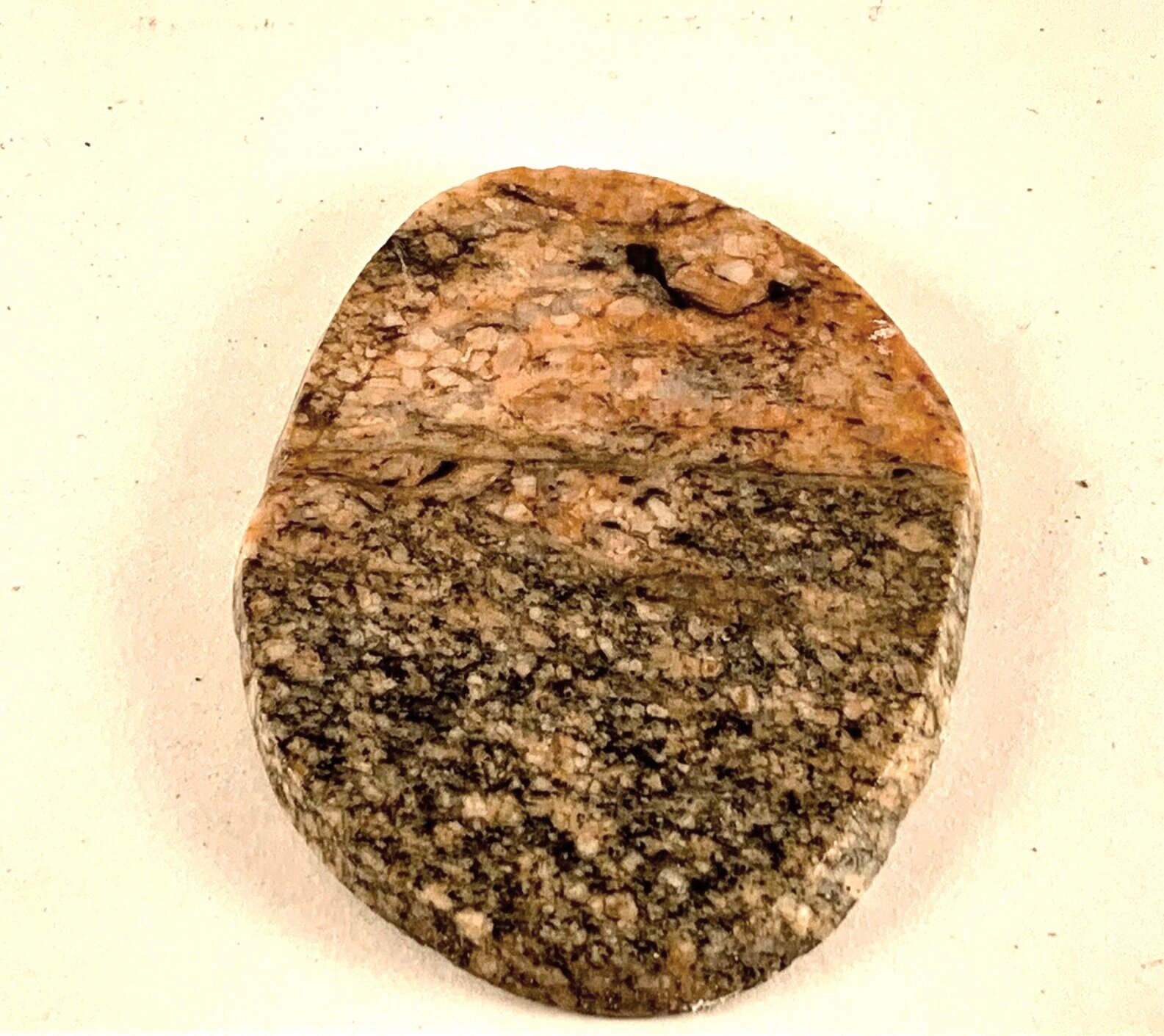Near MacGregor Point, Ontario
The rocks need to be wet in order to observe their patterns and colors, so I hand-select each one as I walk along the beach, often wading through knee-deep water pulling my kayak alongside and loading it up. Sometimes I use a stick to pry stubborn pieces off the bottom; other times I dive in with goggles to get a better look. I am looking for pieces that stand out with unique bandings and distribution of colors and minerals.
The chosen specimens are about the size of a large fist and up to that of a football weighing 5-10 pounds with some roundness to them. If they display any colored banding, I will cut across it so as the distribute the pattern and colors equally across all decor pieces rather than falling on just one or two.
Once returned to the shop, the natural interior colors of these rocks will be revealed by cutting and grinding. A saw with a 16-inch diameter diamond blade is used to cut the rock into slices for coasters, leaving the original outside rock profile. This maintains the original shape with each piece matching up with the next. Once cut, the piece is trimmed and ground to remove burrs and chips then later dried. The dried surface is cleaned and treated, giving a polished appearance. The result is a vibrant “wet look” that brings out beautiful colors and patterns unique to that particular rock. Each of the coasters or items is backed by black felt to protect furniture from scratches.
“Non-coaster” items include holders for tea lights, jewelry, spoon rests and cosmetic make-up items featuring a small well shaped directly into the piece.
My Tools of the Trade
Start to finish
The transition of the process can be followed from the original candidate rock found on the beach. The raw cut surface is still dull but shows the potential color and pattern. Once treated, the surface will display the vibrant colors as if polished or wet and quite different from the raw cut surface.


